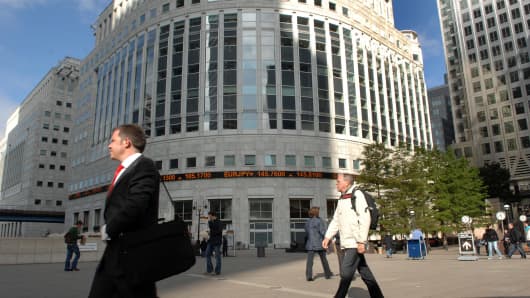Matt Levine at Dealbreaker points out something that I had never quite realized: A lot of smart people believed that Libor was the risk-free rate of interest.
The Libor scandal has always puzzled me in part because I grew up believing this:
There is a small chance that an AA-rated financial institution will default on a LIBOR loan. However, they are close to risk-free. Derivatives traders regard LIBOR rates as a better indication of the "true" risk-free rate than Treasury rates, because a number of tax and regulatory issues cause Treasury rates to be artificially low. To be consistent with the normal practice in derivative markets, the term "risk-free rate" in this book should be interpreted as the LIBOR rate.
That quote is from 2006, and looks sort of adorably naive now—banks are close to risk-free! and AA-rated for that matter!—but the guy, as the saying goes, literally wrote the book on derivatives. In financial markets, pre-crisis, Libor (and Euribor) was less "the rate at which banks borrow from each other" (or "the rate at which banks don't borrow from each other") and more "the risk-free rate for discounting stuff."
Plenty of people – in derivative markets, but also lots of people who borrowed using Libor—thought of Libor that way: it was just "the interest rate," intended to be risk-free. Making it relatively insensitive to big-bank credit would be, on this theory, a feature, not a bug.
In other words, if you think that Libor is supposed to be just a measure of the risk-free rate of interest, then having people manipulate it during a crisis so that it did not accurately reflect the market view of risk in bank lending is not a big deal. The manipulators were helping Libor stay risk-free.
What strikes me as so odd about this view is that I never, ever encountered it in the entire five years or so I spent arranging gargantuan Libor loans.



